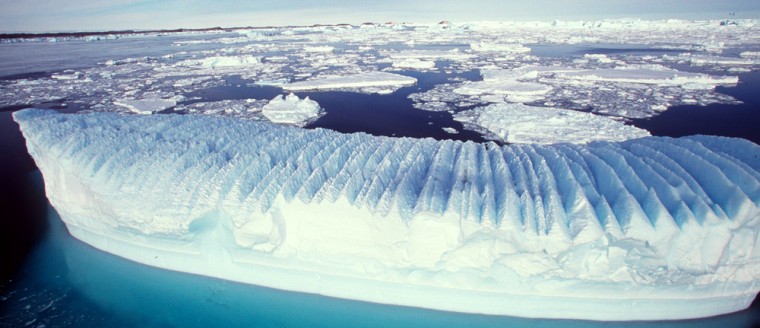Carbon dioxide and other greenhouse gases emitted by humans have brought Earth’s climate close to "critical tipping points, with potentially dangerous consequences for the planet," according to NASA and the findings of a new study.
"Only moderate additional climate forcing is likely to set in motion disintegration of the West Antarctic ice sheet and Arctic sea ice," NASA said in a statement about the findings.
The ice sheet, if fully melted, would raise sea levels by 15 feet. Melting Arctic sea ice, while not raising sea levels, endangers polar bears and could cause changes to ocean circulation.
“If global emissions of carbon dioxide continue to rise at the rate of the past decade, this research shows that there will be disastrous effects, including increasingly rapid sea level rise, increased frequency of droughts and floods, and increased stress on wildlife and plants due to rapidly shifting climate zones," lead author James Hansen of NASA's Goddard Institute was quoted as saying in the NASA statement.
The study defined tipping points as episodes where even moderate additional warming creates significant changes due to feedback effects. "Amplifying feedbacks include increased absorption of sunlight as melting exposes darker surfaces and speedup of iceberg discharge as the warming ocean melts ice shelves that otherwise inhibit ice flow," NASA noted.
The study, published in the current issue of Atmospheric Chemistry and Physics, used data on earlier warm periods to estimate climate impacts, climate models to simulate global warming, and satellite data to verify ongoing changes.
The researchers conclude that additional global warming of about 1.8 degrees Fahrenheit above global temperature in 2000 is likely to be dangerous and that policymakers should aim to keep increases below that threshold, not the 3.6 degrees usually cited in talks.
Hansen said that 3.6 F scenario, which he called the "business-as-usual" approach, would be "a guarantee of global and regional disasters."
The study follows two others this month tied to ice sheet instability.
Last Tuesday, NASA said ice-covered Greenland experienced more days of melting snow and at higher altitudes last year than average over the previous 18 years that satellite measurements have been taken.
A separate study found that satellite measurements for the first time detected that extensive areas of snow melted in west Antarctica in response to warm temperatures.
